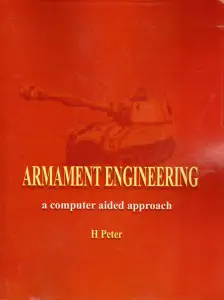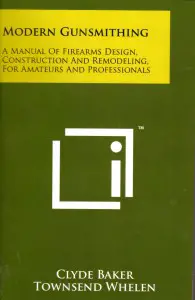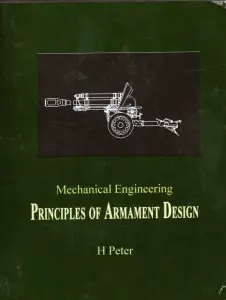New in the Library: Gun Design & Construction Tomes
The Weaponsman end of the Unconventional Warfare Operational Research Library has a few new volumes today. The problem with today’s Amazon dump is that finding the time to read these books will be problematical, especially as two of them are full of sheet music, and require that the problems be worked to really get the benefit of the book.
The first, though, turned out to be a reprint of an old Clyde Baker revision of Col. Townshend Whelen’s Amateur Gunsmithing. This version is called Modern Gunsmithing: A Manual of Firearms Design, Construction and Remodeling for Amateurs and Professionals and it dates from 1928. Most of it appears to be Baker’s work, with three or so chapters from Whelen on the art of barrel making; but despite the subtitle, there is hardly any information on firearms design. The sole exception appears to be Whelen’s thoughts on practical barrel design, and we already had an older hardcover of this book, with more illustrations, than this one.
 The second two books are by a Canadian engineering professor, H Peter. The Peter books are collegiate textbooks, which use as examples the conceptual design and engineering substantiation of artillery pieces and tank main armament, but they can be adapted to smaller-calibre guns. They are Armament Engineering: a Computer Aided Approach (2003) and Mechanical Engineering: Principles of Armament Design (2004), both are published on-demand by Trafford and available at Amazon. They show how to apply modern engineering methods using common software like Matlab and even Excel. Principles of Armament Design even includes a CD of Peter’s programs.
The second two books are by a Canadian engineering professor, H Peter. The Peter books are collegiate textbooks, which use as examples the conceptual design and engineering substantiation of artillery pieces and tank main armament, but they can be adapted to smaller-calibre guns. They are Armament Engineering: a Computer Aided Approach (2003) and Mechanical Engineering: Principles of Armament Design (2004), both are published on-demand by Trafford and available at Amazon. They show how to apply modern engineering methods using common software like Matlab and even Excel. Principles of Armament Design even includes a CD of Peter’s programs.
While the latter books are indeed aimed at someone who’s going to be designing guns with bores measured in multiple inches, there’s a ton of practical mechanical engineering methods that will educate and perhaps entertain the wannabe rifle designer as well. For the non-technical reader who is interested in concepts and history, rather than the very statics and mechanics of arms, these books probably get too deep too fast, and don’t include enough explanatory text.
Here’s an example: these are the headings of the first chapter of Principles of Armament Design, which is called “Design of Gun Barrels”:
1. General Considerations for Gun Barrel Design
Calibre-Wise Classification of Gun Barrels
Effect of Barrel Wear on Accuracy of Guns
Major Influences in The Design of Gun Barrels
Safety Factor in Barrel Design
Stress Effect of Recoil Forces on Gun Barrels
Vibrations of Gun Barrels
Heating of Gun Barrels
Bending of Gun Barrels
Cook Off
1.2 Theories of Failure of Gun Barrel Materials
Basis for Failure Theories
Theories of Failure Associated with Gun Barrel Materials
The Maximum Shear Stress or Tresca Theory.
The Maximum Distortion Energy or Huber-Von Mises-Hencky Theory
Two-Dimensional Stress Case
1.3 Conventions Used in Gun Barrel Design
Gun Pressure Codes
Computed Maximum Pressure (CMP)
Rated Maximum Pressure (CMP)
Permissible Individual Maximum Pressure (PIMP)
Allowable Stress
Elastic Strength Pressure (EST)
Safety Factor (SF)
Allowance for Eccentricity
Droop, Attachments and Manufacturing Influences on Gun Barrel Wall Thickness
The remainder of the chapter walks a student through the design of a monobloc large caliber gun barrel (Peter defines “large caliber” or “heavy armament” as >30mm, with smaller caliber weapons going into a “small arms and cannon” bin). All of Peter’s design examples are for large caliber weapons and their equipment, such as recoil-management apparatus, and mechanical and powered elevating and traversing gear.
One important note for readers and students worldwide is that Peter uses exclusively international units (the metric system). The French Revolution might have failed at everything else, but they did introduce a lasting system of weights and measures.
The computing demands are not too exotic, and the math is college-freshman math. The computer here is a helper at doing the mathematics, and no fancy engineering computation (such as finite-element analysis) comes into play.
If math makes your hair hurt, and you don’t have any ambitions to design anything, you might still learn a good bit about artillery design and construction today from Professor Peter. But these books probably aren’t the best choice for that reader.
PS. A Non-Weapons Entry in the UWORL
We also have a new book, Bright Light, by Steve Perry, another New England SF vet (although he grew up in California). Steve served in MAC-V SOG at FOB 1 and was a relative rarity, a recon-running medic. Bright Light, which gets its name from the code name of personnel recovery missions in the Vietnam War, is Steve’s memoir of his SF and SOG service. You can learn more about Bright Light and Steve, and buy the book, here. (We bought the book and the e-book. We believe in supporting SF authors. Like us, they joined a minority group).
9 thoughts on “New in the Library: Gun Design & Construction Tomes”

Kevin was a former Special Forces weapons man (MOS 18B, before the 18 series, 11B with Skill Qualification Indicator of S). His focus was on weapons: their history, effects and employment. He started WeaponsMan.com in 2011 and operated it until he passed away in 2017. His work is being preserved here at the request of his family.



I missed those in my search, but came up with:
Ballistics: Theory and Design of Guns and Ammunition
Carlucci & Jacobsen
2nd Ed 2014
The authors work at Picatinny. It’s a grad school mechanical engineering text full of dancing snakes. Very well written and besides artillery even gives analysis of spud guns and rifles. Math is basic calculus and differential equations. Good book if you have adequate physics background. The authors were heavily involved in the Excalibur work.
Main sections are titled Interior Ballistics, Exterior Ballistics and Terminal Ballistics.
Thanks, Reg! We’re on it (one more unread book, shot out…)
ETA: that’s one expensive book, but then, engineering texts usually are. Supply and demand thing. The demand is inelastic for the poor bastards assigned the text, and otherwise, nearly nonexistent.
Carlucci & Jacobson is cheap relative to this:
Brassey’s Essential Guide to Military Small Arms: Design Principles and Operating Methods Hardcover – August 1, 1997
by Derek Allsop (Editor)
current asking price for used copies is $758 🙁 Hopefully it will get reprinted soon.
As you note it’s a small market. Not that many people are interested in guns at the engineering level. I borrowed Townsend Whelen’s two volume work and was greatly disappointed by the lack of mathematics.
Equations may be painful to read, but deriving them is far worse.
Sheet music? What’s next, a Bach Fugue on M240 with grenade crescendos? The mind boggles…..
“Sheet music” — slang for equations. Like music, you have to learn to read it.
Made me laugh!
It is good to see some reviews for the last two books. The reviews I had been seeing on amazon had remarked that they were basically photocopied and incredibly hard to read.
I didn’t have that problem. They are print on demand, but the print quality is high. However, some of the super- and sub-scripts are very small and difficult to read. I can read the book without my reading glasses, but struggle with some of the superscripts to superscripts, which seem to be about .005″ wide. They’re cleanly printed and I can read them with a printer’s loupe.(Well, actually it came from a Swiss reinsurer for reading contract fine print).
I don’t know if reviewers got bad copies — if it was printed with too much ink it would be illegible for sure. Or, perhaps they’re talking about the letter-size readability problem.
This is not rare in engineering texts. Readability of Peter’s books would be vastly improved if the equations were printed larger, or if at least the super and subscripts were held to agate type size or larger.
I am interested in “vibrations of gun barrels” re accuracy. There’s this product that consists of a rubber thingy, slides onto the barrel and is supposed to cut vibration enough to significantly increase accuracy when firing, say, a .308 semi-auto. Does it? Would it? Can it?